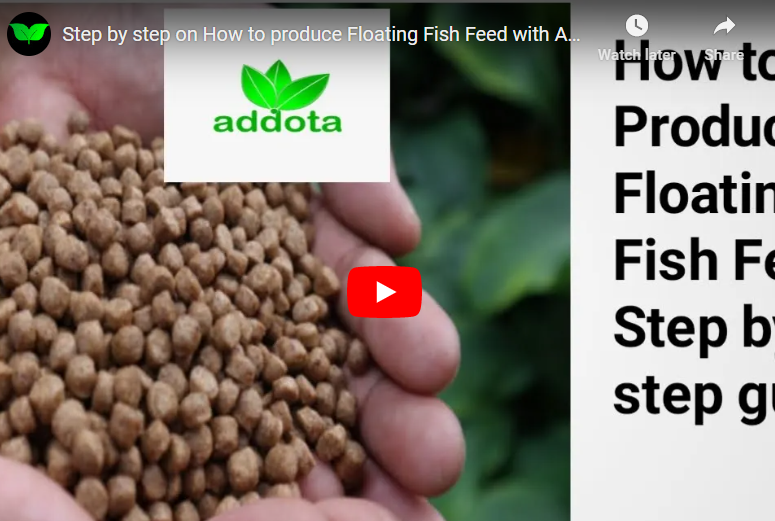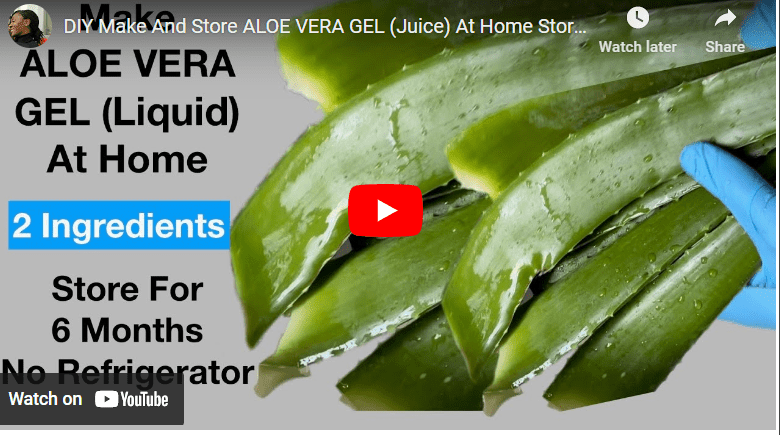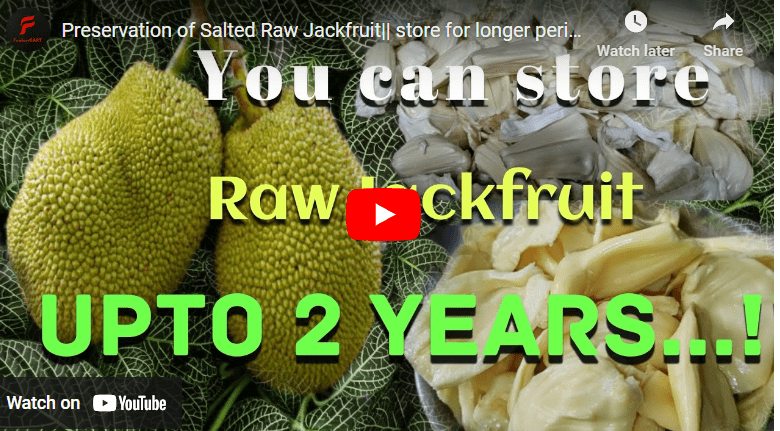Fish feed is a very important part of a fish’s diet, but it’s also something that can be a challenge to get right. That’s why we’re here!
Fish feed formulation is a process that involves the mixing of ingredients, usually involves a combination of several ingredients, including fishmeal, soybean meal, corn gluten meal, and fish oil. The formulation process aims to balance the protein, carbohydrate, lipid, and vitamin/mineral requirements of the target fish species.
Factors such as fish size, feeding behavior, water temperature, and water quality also influence the formulation process. In this guide, we’ll walk you through the process of formulating fish feed in the US and how to do it yourself.
How to Formulate Fish Feed In the US
With the growing demand for fish, it is crucial to develop high-quality fish feed that maximizes fish growth and health while minimizing environmental impact.
Fish feed formulation in the US is a process that allows one to formulate the ingredients required for fish feeds. In order to formulate fish feed, you need to have the knowledge of the formulation processes.
Therefore, we have compiled the step by step guide on how to formulate fish feed in the US below.
Read Also: How To Formulate Fish Feed In UK
Step 1. Determine The Target Fish Species
The target fish species is one of the most important factors to consider when you are formulating a fish feed.
This will enable you to determine what nutrients are needed in the diet, how much protein and fat are needed, as well as which ingredients are used.
If your target fish species is not known, you should do some research on their nutritional needs.
Step 2. Determine The Nutrient Requirements
Also, it is necessary that you determine the nutrient requirements of aquatic animals. This step aids in identifying the deficient nutrients in the fish food and the appropriate amount of these nutrients needed.
The two significant types of nutrients are macronutrients, such as carbon, nitrogen, phosphorus, and potassium, and micronutrients, such as vitamins.
Another crucial nutrient type is amino acids, which play a crucial role in the growth of fish, although they are not necessary for survival in an aquarium.
Read Also: How To Formulate Fish Feed in Nigeria
Step 3. Select The Ingredients
Once you have determined the nutrient requirements, select the ingredients that will meet those requirements.
There are several ingredients used to formulate fish feed in the US, depending on the target fish species and their nutrient requirements.
Here are some common ingredients used in fish feed formulation:
- Fishmeal: Fishmeal is a high-protein ingredient made from ground-up fish, typically from small, oily fish such as anchovies and sardines. It is a rich source of essential amino acids, vitamins, and minerals.
- Soybean meal: Soybean meal is a plant-based protein source that is commonly used in fish feed formulation. It is a good source of protein and contains all of the essential amino acids needed for fish growth.
- Corn gluten meal: Corn gluten meal is a by-product of corn processing that is high in protein and used as a protein source in fish feed.
- Fish oil: Fish oil is a rich source of omega-3 fatty acids, which are essential for fish growth and development.
- Vitamin and mineral premixes: Vitamin and mineral premixes are used to ensure that the fish feed contains all of the necessary vitamins and minerals required for fish health.
- Wheat flour: Wheat flour is a source of carbohydrates and is often used as a binder in fish feed.
- Rice bran: Rice bran is a by-product of rice processing that is high in protein, fiber, and other nutrients.
- Canola meal: Canola meal is a by-product of canola oil production that is high in protein and used as a protein source in fish feed.
- Krill meal: Krill meal is a source of protein and omega-3 fatty acids that is commonly used in fish feed for salmonids and other marine fish.
Read Also: [Beginners Guide] How To Formulate Fish Feed in Uganda
Step 4. Mix The Ingredients
Once you have determined the proportions, mix the ingredients thoroughly. You can use a commercial mixer or mix the ingredients by hand.
Here is a step-by-step guide on how to mix the ingredients for fish feed formulation:
Step 1: Prepare The Ingredients
Before you start mixing, make sure that all the ingredients are weighed accurately and ready to use. It’s important to follow the recipe closely to ensure that the nutrient requirements of the target fish species are met.
Read Also: [Beginners Guide] How To Formulate Fish Feed In South Africa
Step 2: Use A Mixing Bowl
To mix the ingredients by hand, use a clean and dry mixing bowl that is large enough to hold all the ingredients. Make sure the bowl is free of any contaminants that could affect the quality of the fish feed.
Step 3: Mix The Dry Ingredients
Add all the dry ingredients to the mixing bowl and stir them together until they are evenly distributed. Make sure that there are no clumps or lumps in the mixture.
Step 4: Add The Liquid Ingredients
Once the dry ingredients are mixed well, add the liquid ingredients, such as fish oil or water, to the mixing bowl. Stir the mixture again to ensure that all the ingredients are evenly distributed.
Read Also: [Beginners Guide] How To Formulate Fish Feed In Ghana
Step 5: Continue Mixing
Mix the ingredients until you have a uniform and consistent blend. You can use a whisk, a wooden spoon, or an electric mixer to achieve the desired consistency.
Step 6: Check For Consistency
Once the mixture is well-mixed, check its consistency. It should be moist enough to hold together but not too wet or sticky.
Step 5. Pelletize The Feed
Pelletizing the feed is essential to ensure that the fish can easily consume it. Pelletizing involves compressing the feed mixture into small pellets of uniform size and shape.
Read Also: [Beginners Guide] How To Formulate Feed For Snail
Step 6. Store The Feed
Once the mixture is thoroughly mixed, store it in an airtight container in a cool and dry place until you’re ready to pelletize the feed.
Benefits of Formulating Fish Feed in the UK
#1. Control over ingredients
Formulating fish feed in the UK allows fish farmers to have control over the quality and quantity of the ingredients used in their fish feed, resulting in higher-quality feed.
#2. Cost savings
By formulating their own fish feed, fish farmers can save money in the long run, as they can source the raw ingredients at lower prices and avoid markups from middlemen.
Read Also: [Beginners Guide] How To Formulate Feed For Snail South Africa
#3. Customization
Formulating fish feed allows farmers to customize the feed to suit the specific needs of their fish, including their age, species, and growth stage.
#4. Sustainability
By formulating their own fish feed, farmers can use sustainable ingredients and avoid contributing to the depletion of wild fish stocks.
Cost of Formulating Fish Feed in the UK
#1. Initial investment
The cost of equipment and raw materials for formulating fish feed can be high, requiring a significant initial investment.
Read Also: [Beginners Guide] How To Formulate Feed For Snail In the US
#2. Labor costs
Formulating fish feed is a time-consuming process that requires skilled labor, which can be costly.
#3. Quality control
Ensuring the quality and consistency of the feed can require additional testing and quality control measures, which can add to the cost.
Disadvantages of Formulating Fish Feed in the UK
#1. Technical Knowledge
Formulating fish feed requires specialized technical knowledge and expertise, which can be a barrier to entry for some fish farmers.
Read Also: [Beginners Guide] How To Formulate Feed For Snail In Ghana
#2. Time-consuming
Formulating fish feed can be a time-consuming process, taking farmers away from other important tasks.
#3. Risk of Contamination
If not done properly, formulating fish feed can lead to contamination and other food safety issues.
Best Practices of Formulating Fish Feed in the UK
#1. Follow A Recipe
Use a proven recipe for fish feed formulation and follow it precisely to ensure consistent quality.
Read Also: [Beginners Guide] How To Formulate Feed For Snail In Nigeria
#2. Source High-Quality Ingredients
Choose high-quality ingredients from reputable suppliers to ensure the quality and safety of the feed.
#3. Use Proper Equipment
Invest in quality equipment that can handle the processing and mixing of the raw ingredients.
Read Also: How To Formulate Pig Feed In Ghana
Challenges Of Formulating Fish Feed in the UK
#1. Sourcing ingredients
Sourcing high-quality and sustainable ingredients can be a challenge, especially for small-scale fish farmers.
#2. Quality control
Ensuring the quality and consistency of the feed can be challenging, requiring additional testing and quality control measures.
Read Also: [Beginners Guide] How To Formulate Poultry Feed In Kenya
#3. Technical expertise
Formulating fish feed requires specialized technical knowledge and expertise, which can be a barrier to entry for some fish farmers.
Where To Sell Snail Feed in the UK
#1. Online Marketplaces
There are several online marketplaces that cater to pet owners, such as Amazon and eBay, where snail feed can be sold.
#2. Pet Stores
Pet stores that specialize in exotic animals, such as reptiles and amphibians, may be interested in selling snail feed.
#3. Direct Sales
Snail feed can be sold directly to snail farmers or pet owners who keep snails as pets.
Read Also: How To Formulate Pig Feed In Kenya
Equipment Needed For Fish Feed Formulation
#1. Grinder
A grinder is used to process raw ingredients, such as grains and seeds, into a fine powder.
#2. Mixer
A mixer is used to combine the raw ingredients into a homogeneous mixture.
#3. Pelletizer
A pelletizer is used to shape and compress the mixture into pellets, which can be easier for fish to digest.
#4. Packaging equipment
Packaging equipment is used to package the fish feed in bags or containers for distribution.
Feed Formulation for Fish PDF
Feed formulation is a critical aspect of fish farming that involves the process of selecting the right ingredients, mixing them in appropriate proportions, and preparing a nutritionally balanced diet for the fish.
The quality of the fish feed has a direct impact on the growth, health, and productivity of the fish.
Therefore, it is crucial to develop a proper feed formulation for different species of fish, taking into consideration their nutritional requirements, growth rate, and environmental factors.
A feed formulation for fish PDF is a comprehensive guide that provides detailed information on how to develop a nutritionally balanced diet for different species of fish.
It includes information on the nutrient requirements of fish, the types of feed ingredients available, their nutritional values, and the recommended proportions to achieve a balanced diet. The PDF also provides guidelines on feed processing, storage, and feeding management practices.
Low Cost Fish Feed Formulation
Fish feed is one of the major inputs in fish farming, and its cost can significantly affect the profitability of the business.
Therefore, it is essential to develop low-cost fish feed formulations without compromising the nutritional quality of the feed.
Some of the strategies for developing low-cost fish feed formulations include the use of locally available feed ingredients, recycling of by-products from other industries, and minimizing waste and losses during the feed preparation process.
The use of locally available feed ingredients is an effective way to reduce the cost of fish feed.
Ingredients such as rice bran, wheat bran, maize, soybean meal, and fishmeal are readily available in most regions and can be used to develop a nutritionally balanced diet for fish.
Furthermore, by-products from other industries such as cassava, brewery, and poultry can also be used to develop low-cost fish feed.
Fish Feed Preparation
Fish feed preparation involves several steps, including ingredient selection, grinding, mixing, pelleting, and drying. The first step in fish feed preparation is to select the right ingredients based on the nutritional requirements of the fish.
The ingredients are then ground into a fine powder to improve their digestibility.
The ground ingredients are then mixed in appropriate proportions to achieve a nutritionally balanced diet. The mixing process can be done manually or using a mixer.
Once the ingredients are well mixed, they are pelleted using a pellet mill. The pellets are then dried to reduce their moisture content and increase their shelf life.
Floating Fish Feed Formulation PDF
Floating fish feed is a popular type of fish feed that is widely used in aquaculture. Floating fish feed formulation PDF provides detailed information on how to develop a nutritionally balanced diet for fish that can float on the water surface.
The PDF includes information on the types of ingredients used in the formulation, their nutritional values, and the recommended proportions to achieve a balanced diet.
The PDF also provides guidelines on the processing of floating fish feed, including pelleting, drying, and storage.
Also, the PDF includes information on the feeding management practices that should be followed when using floating fish feed, such as feeding frequency, feeding rate, and feeding time.
The proper use of floating fish feed can significantly improve the growth, health, and productivity of fish in aquaculture systems.
Fish Feed Formulation Book PDF
A fish feed formulation book in PDF format is a comprehensive guide that provides detailed information on how to develop a nutritionally balanced diet for different species of fish.
The book includes information on the nutrient requirements of fish, the types of feed ingredients available, their nutritional values, and the recommended proportions to achieve a balanced diet.
It also provides guidelines on feed processing, storage, and feeding management practices.
The advantage of having a fish feed formulation book in PDF format is that it can be easily accessed and shared across different platforms.
This makes it convenient for fish farmers, researchers, and other stakeholders in the aquaculture industry to access the information they need to develop a nutritionally balanced diet for their fish.
Fish Feed Formulation PPT
A fish feed formulation PPT is a presentation that provides an overview of the process of developing a nutritionally balanced diet for fish.
It includes information on the nutrient requirements of fish, the types of feed ingredients available, and the recommended proportions to achieve a balanced diet.
The PPT also provides guidelines on feed processing, storage, and feeding management practices.
The advantage of having a fish feed formulation PPT is that it can be used to deliver presentations to a large audience.
This makes it an effective tool for training fish farmers, students, and other stakeholders in the aquaculture industry on the process of developing a nutritionally balanced diet for fish.
Fish Feed Formulation Excel Sheet
A fish feed formulation Excel sheet is a spreadsheet tool that can be used to develop a nutritionally balanced diet for fish.
The Excel sheet includes columns for inputting the nutrient requirements of fish, the types of feed ingredients available, and their nutritional values.
It also includes formulas that automatically calculate the recommended proportions of each ingredient to achieve a balanced diet.
The advantage of using an Excel sheet for fish feed formulation is that it simplifies the process of calculating the recommended proportions of each ingredient.
This saves time and reduces the risk of errors when developing a nutritionally balanced diet for fish.
Feed Formulation Example
A feed formulation example provides a practical demonstration of the process of developing a nutritionally balanced diet for fish.
An example may include information on the nutrient requirements of a specific species of fish, the types of feed ingredients available, and their nutritional values.
It may also provide guidelines on feed processing, storage, and feeding management practices.
The advantage of using a feed formulation example is that it provides a step-by-step guide on how to develop a nutritionally balanced diet for fish.
This makes it a useful tool for fish farmers, students, and other stakeholders in the aquaculture industry who are learning about the process of fish feed formulation.
Conclusion
Formulating fish feed in the US requires knowledge of the nutritional requirements of different fish species, the availability and cost of feed ingredients, and the manufacturing process. The aim is to produce a balanced and cost-effective feed that meets the specific needs of fish in different stages of growth and production. Proper formulation can enhance fish health, growth, and productivity, contributing to the sustainable development of the aquaculture industry in the US.




